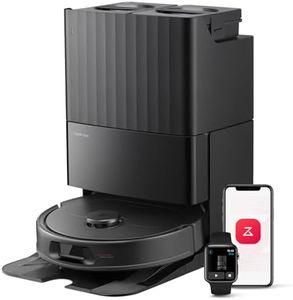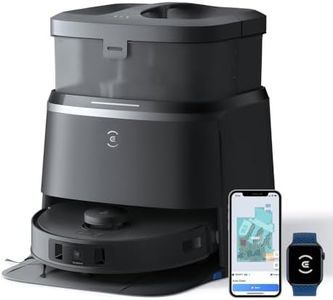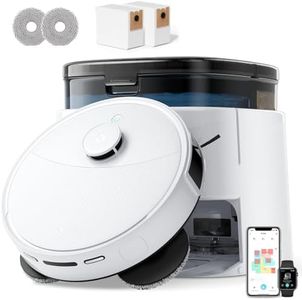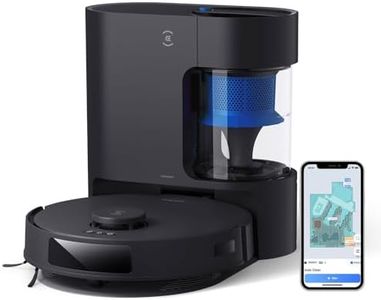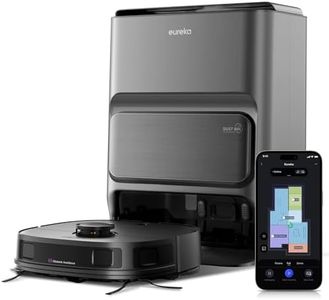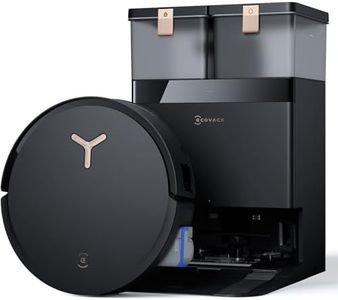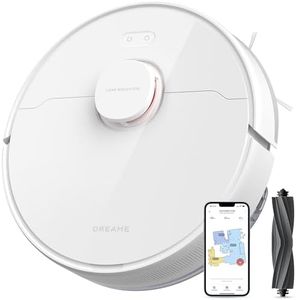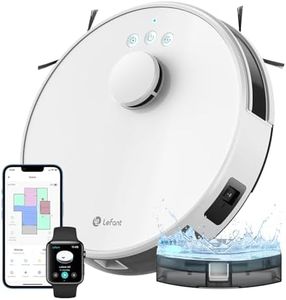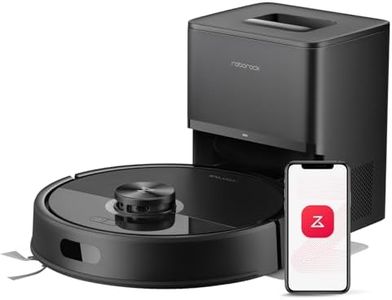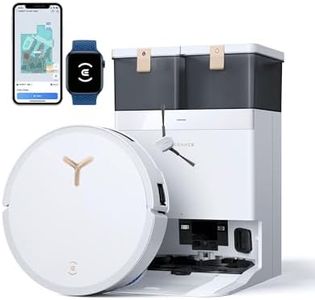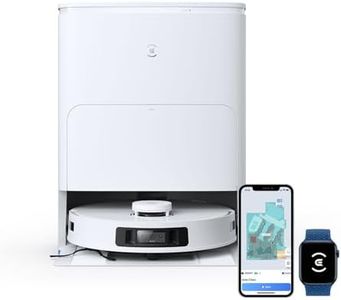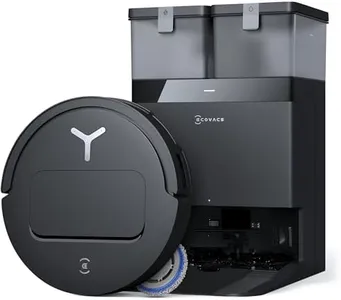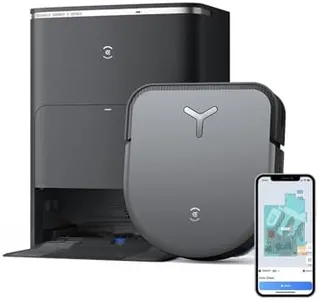We Use CookiesWe use cookies to enhance the security, performance,
functionality and for analytical and promotional activities. By continuing to browse this site you
are agreeing to our privacy policy
10 Best Robot Cleaners
From leading brands and best sellers available on the web.Buying Guide for the Best Robot Cleaners
Choosing the right robot cleaner can make your life much easier by taking care of routine floor cleaning with minimal effort from you. As you shop, think carefully about the size of your home, the types of floors you have, how much time you want to spend maintaining the machine, and if you have pets or allergy concerns. Different models offer a variety of features and strengths, so matching these to your specific needs is the key to finding the best fit.Navigation SystemThe navigation system determines how the robot moves around your space and avoids obstacles. Simple robots use random patterns, while more advanced ones map your home and follow systematic paths. If you live in a small, simple space, a basic navigation system will likely be enough. For larger or more cluttered homes, or if you want more thorough cleaning and fewer missed spots, a robot with an advanced navigation system that uses cameras or laser sensors will be beneficial.
Suction PowerSuction power affects how well the robot picks up dirt, dust, and hair from your floors. Lower suction is sufficient for standard cleaning on hard floors, while higher suction is important if you have a lot of carpets or pets that shed. If your main concern is keeping hardwood or tile floors clear of dust, you don't need maximum power, but for deep carpets and heavy pet hair, seek models advertised with stronger suction.
Battery LifeBattery life dictates how long a robot cleaner can operate before needing to recharge. In small apartments or condos, a shorter battery life will still let the robot finish cleaning in one go. In bigger homes, look for longer battery life or robots that can return to their dock, recharge, and resume cleaning automatically. This way, the robot can handle the entire space efficiently.
Dustbin CapacityDustbin capacity decides how much dirt your robot can hold before it needs to be emptied. If you have pets, a lot of foot traffic, or large areas, a bigger dustbin means less frequent emptying and more convenience. For small spaces or occasional use, a smaller dustbin won't be a big issue.
Floor Type CompatibilityNot all robot cleaners are equally effective on every floor type. Some are better suited for hard floors, while others are designed to handle both carpets and hard surfaces. Think about the mix of surfaces in your home. If you only have tiles or wood, most robots will do fine, but if you have thick carpets, make sure the robot is rated to clean them effectively.
Smart Features and App ControlSmart features include app controls, voice assistant compatibility, and scheduling options. With these, you can control your robot remotely, customize cleaning routines, and receive maintenance alerts. If you enjoy tech convenience or want to schedule cleans while you're away, look for robots with robust smart features. If you prefer simplicity, a basic model with manual controls may suit you better.
Noise LevelThe noise level refers to how loud the robot is during operation. For homes with babies, pets, or people working from home, a quieter robot will be less disruptive. For those who plan to run the robot mainly when away, noise may not be a big concern.
Maintenance RequirementsRegular maintenance, like emptying the bin, cleaning brushes, and replacing filters, ensures the robot works efficiently. Some robots have self-cleaning options that make your job easier, while others require more frequent manual intervention. If you want the least amount of hands-on upkeep, look for models that advertise low-maintenance features or self-emptying bins.

